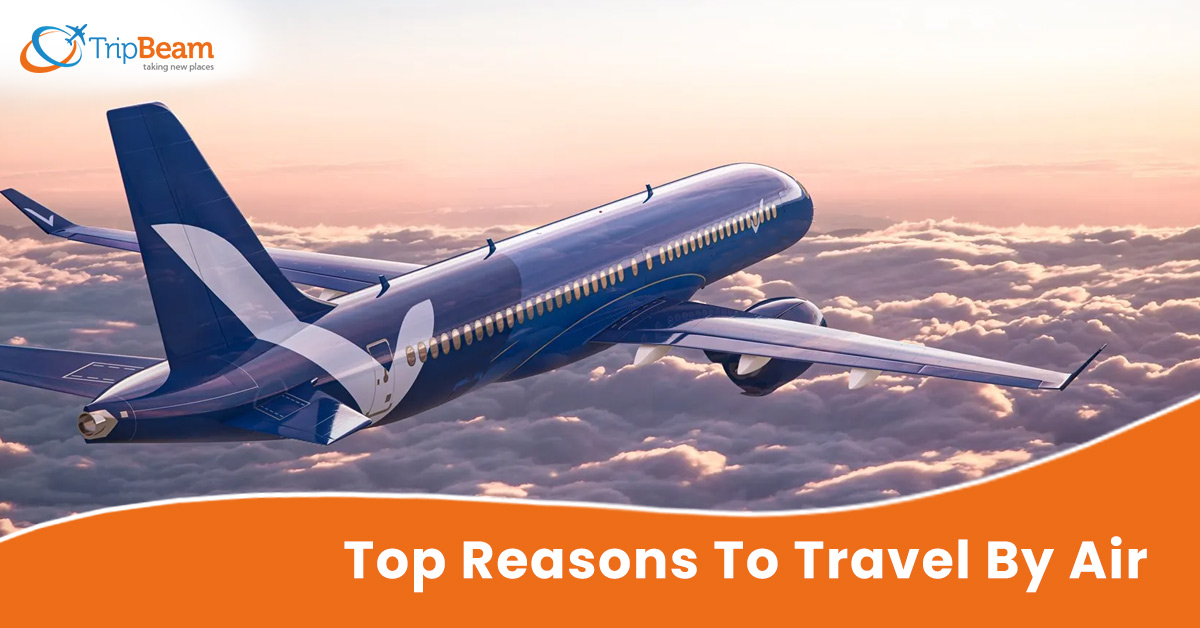
Introduction
Very few individuals are scared of driving, yet millions of travelers are afraid of flying. Yet, would you believe it if I told you that flying is considerably safer than driving along the interstate?
Flying is the safest mode of transportation; this is a commonplace statement. More people proliferated the notion that air travel was safe in the 1990s when air travel became more prevalent. More first-time fliers likely shared it because they wanted a technique to assure they were safer than in a car on the road and found themselves slightly panicked.
Airlines providing India international flights are required to perform regular maintenance checks on their planes, ensuring that they are in good working condition before takeoff. Pilots are also required to undergo regular training and certification to ensure that they are competent and knowledgeable in their roles.
Changing Face of Air travel
Air travel has come a long way in terms of safety since the early days of aviation. With technological advancements and rigorous safety measures, air travel has become one of the safest modes of transportation available today with the best travel offers online. In this part, we will discuss the reasons why air travel is safer nowadays in 2023.
1. Advanced Technology
The aviation industry has made great strides in terms of technology over the past few decades. State-of-the-art avionics, advanced communication systems, and more efficient engines are equipped on aircraft today. These technological advancements have helped to make air travel safer by improving the accuracy of navigation, communication, and monitoring systems for passengers booking India international flights. Autopilot systems, equipped in modern aircraft, can help to prevent accidents by taking over in the event of an emergency.
2. Improved Maintenance
Airline maintenance standards have also improved significantly over the years. Airlines are required to adhere to strict maintenance schedules and perform regular inspections to ensure that their aircraft are in top condition. The maintenance personnel highly train and rigorously follow safety protocols to identify and address any potential issues before they become safety hazards. This means that aircraft are less likely to experience mechanical failures or malfunctions that could result in accidents.
3. Stringent Safety Regulations
Another factor that has contributed to the increased safety of air travel is the implementation of stringent safety regulations. Aviation authorities such as the Federal Aviation Administration (FAA) and the European Aviation Safety Agency (EASA) have established rules and regulations that airlines must follow to ensure the safety of their passengers and crew.
Airlines need to perform regular maintenance checks on their planes, ensuring that they are in good working condition before takeoff. Pilots are also required to undergo regular training and certification to ensure that they are competent and knowledgeable in their roles. Air Traffic Controllers train to monitor and manage air traffic to prevent collisions.
4. Improved Training
Pilots and other aviation personnel receive extensive training to ensure that they are able to operate aircraft safely and effectively. Pilots must complete rigorous training programs that include classroom instruction, simulator training, and in-flight training. Theymust undergo regular recurrent training to keep their skills up-to-date.
5. Improved Communication
Communication is critical in the aviation industry, and advancements in technology have helped to improve communication between pilots, air traffic controllers, and ground personnel. Modern communication systems allow for real-time updates and enable pilots to receive weather and other important information quickly and accurately. This helps to reduce the risk of accidents caused by miscommunication or misunderstanding.
6. Improved Emergency Response
Emergency response teams are now in better position to handle the situation in the unlikely event of an accident. Airports and airlines have implemented emergency response plans outlining the steps to take in case of an emergency. Emergency response teams undergo regular training to ensure that they are preparing to handle any situation that may arise.
Moreover, advances in technology have made it easier for emergency responders to locate a plane in distress. GPS technology and other tracking systems enable rescue teams to pinpoint the exact location of a plane, reducing response times and improving the chances of survival for passengers and crew.
7. Data Analysis
The aviation industry is now able to collect and analyze vast amounts of data related to safety. We can identify potential safety hazards and develop strategies to prevent accidents from occurring using this data. For example, airlines can use data analysis to identify patterns in maintenance issues and take steps to address them before they become safety hazards. We can use data analysis to identify areas where we can improve pilot training or where we need additional safety measures.
8. Improved Security
Authorities have significantly enhanced security measures in recent years to prevent acts of terrorism and other security threats. This includes more rigorous screening procedures for passengers and their luggage, as well as improved security measures for airport personnel and infrastructure. This has helped to make air travel safer and more secure for passengers and crew alike.
Read More: Book Cheapest Flights – Best Days To Avail Maximum Discount
Conclusion
Air travel has become significantly safer over the years due to advancements in technology, improved maintenance standards, enhanced safety regulations, improved training, improved communication, safer airports, data analysis, and improved security measures. Lastly, increased awareness and education have contributed to the safety of air travel. Passengers booking India international flights are now more aware of the safety measures that airlines have put in place to ensure their safety. Airline safety videos now provide detailed instructions on what to do in case of an emergency, helping passengers understand what to expect during a crisis.

